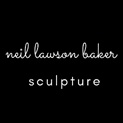This is a new blog showing the creation of a new enlargement.
As part of the centenary celebrations of Kahlil Gibran‘s ‘The Prophet‘, I’ve decided to make a number of new large sculptures. The works are offered as a tribute to collectors and Gibran devotees, as part of the Gibran Sculpture Series.
Here is the beginning of the story for one of them.
The work is call ‘Speak to us of Crime and Punishment‘ and I created the original bronze maquette some years ago.
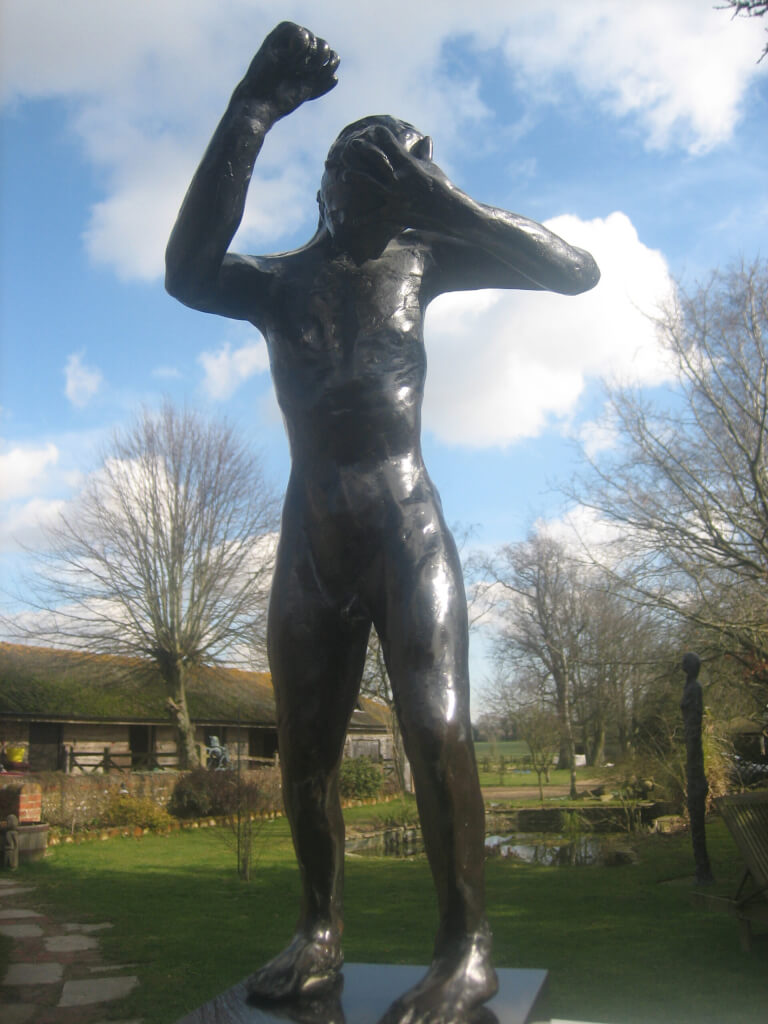
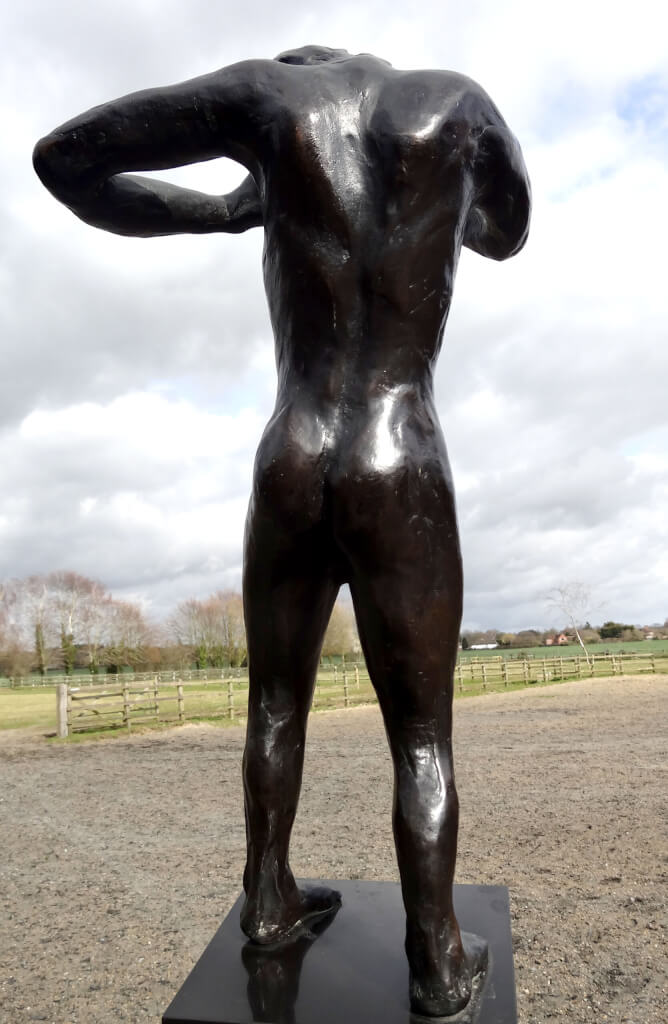
Here’s the maquette from which the enlargement will be made.
The first stage in making an enlargement is to decide on the finished size. Once you have decided that, you can set up the pantograph (which is what you use to make the magnification).
This work will be life-and-a-quarter in size.
In the enlarger’s workshop
The first stage in making an enlargement is to decide on the finished size. Once you have decided that, you can set up the pantograph (which is what you use to make the magnification).
This work will be life-and-a-quarter in size.
The next step is to build a steel armature. This is a series of welded steel rods which give structural strength to the clay. Without an armature, the clay would just collapse.
It may not be obvious, but the armature needs to be really accurately shaped because if it isn’t, you just can’t get a faithful, accurate enlargement for the next step which is the clay enlargement.
Working with a specialist enlarger is the best way to proceed and this work is being enlarged by Richard Clarke.
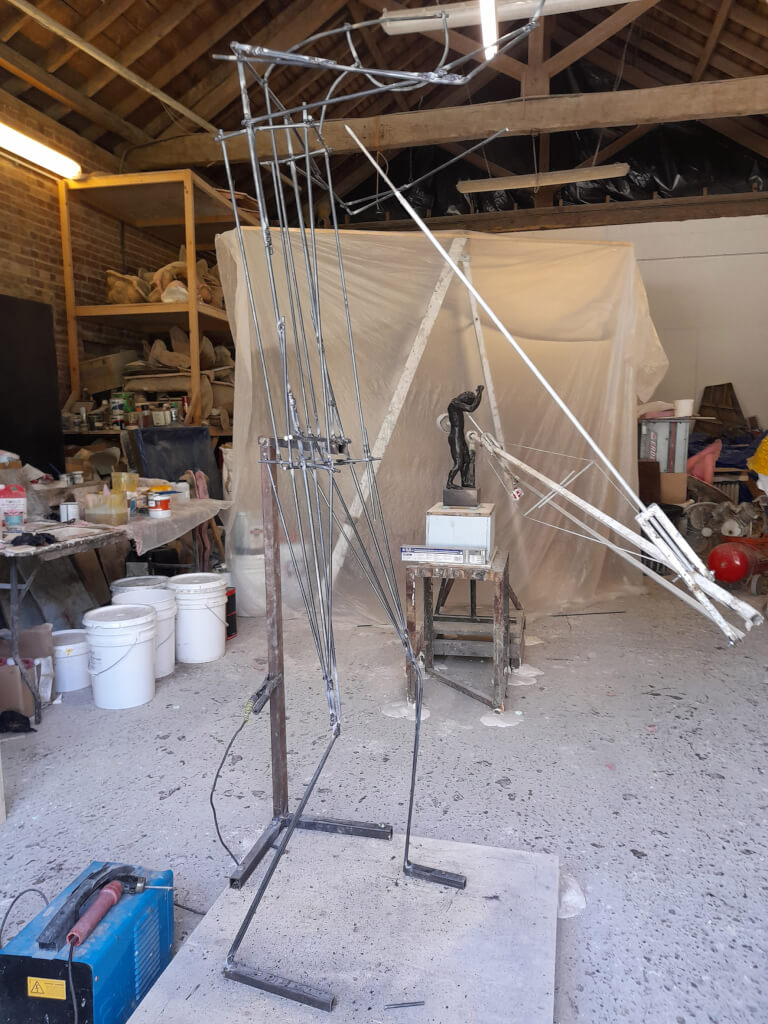
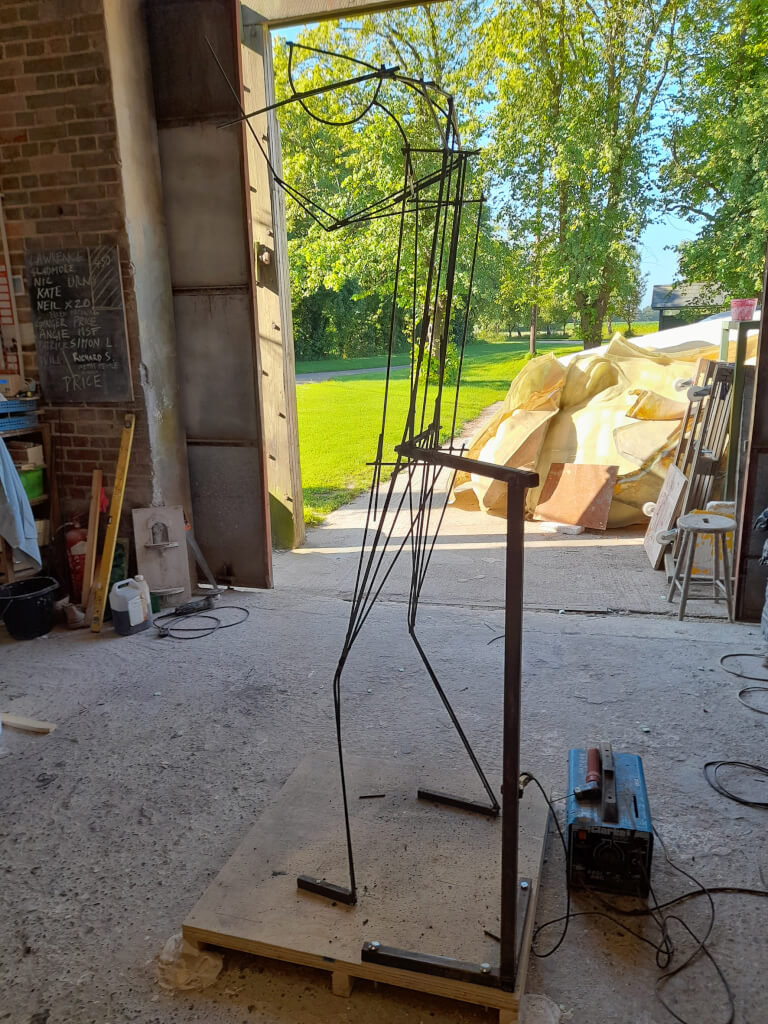
The finished armature on a plywood base.
The left photo shows the armature and the maquette in the background. The long white angular metal contraption to the right of the picture is the pantograph, which accurately magnifies and maps the maquette to the newly enlarged size.
The thicker bits are the structural support frame used to keep the armature upright while it is being built.
The blue box is the arc welder used to join the individual rods.
